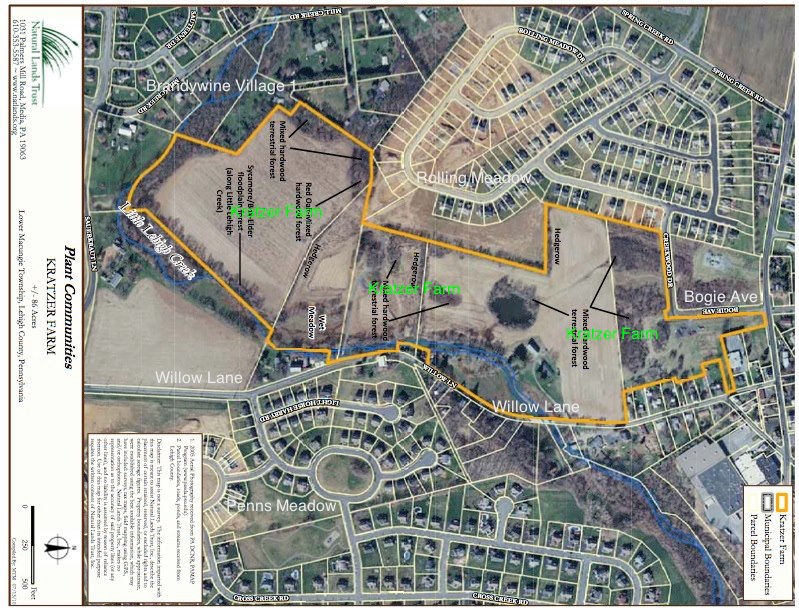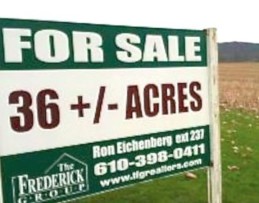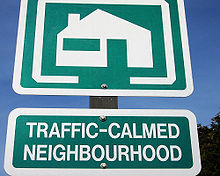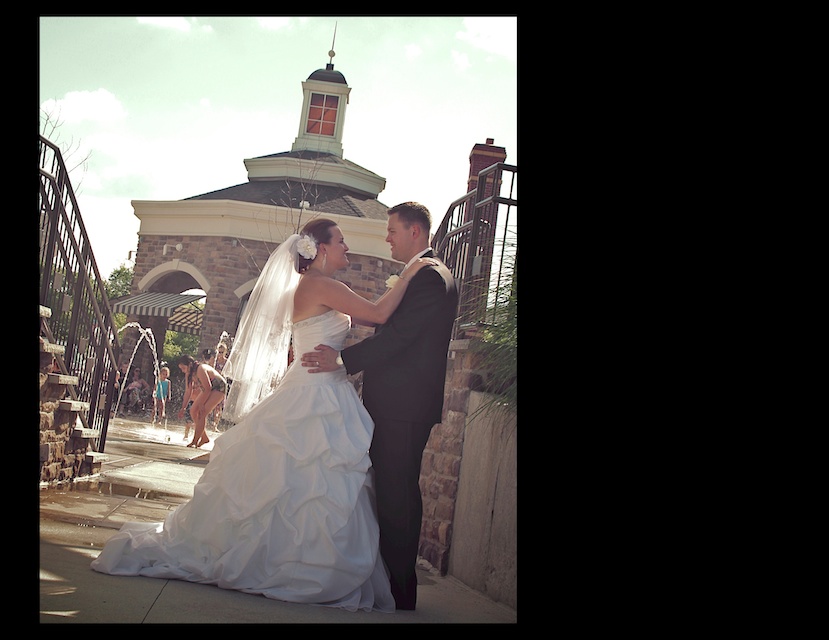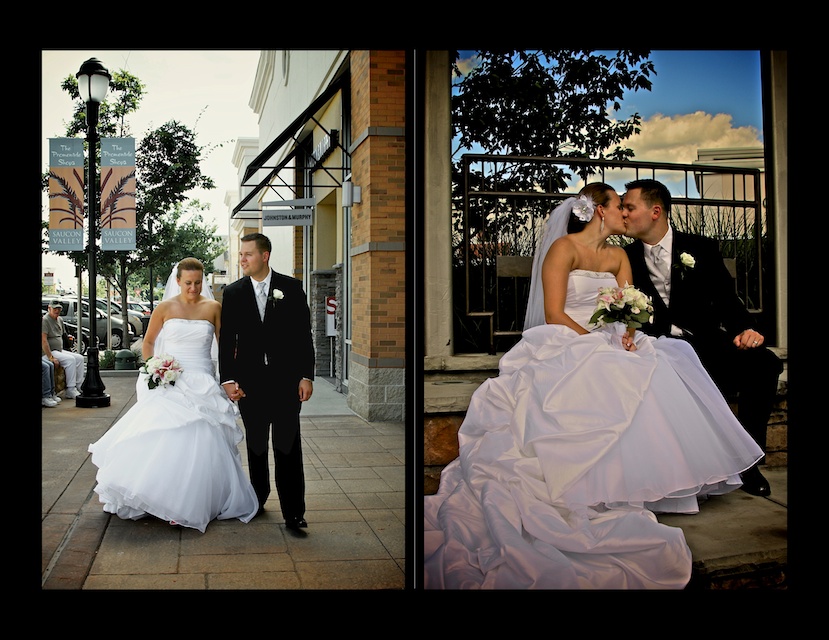A. The township should apply to sell agricultural conservation easements to the Lehigh County. The annual deadline for submitting an application is March 31st. According to a representative from the program the parcel would likely be valued a high priority since it contains fertile limestone soil. Currently the program is paying up to 5000/acre for preservation. I am estimating proceeds of selling the rights (the township still owns the property) could net up to 250,000 dollars.
Category Archives: Lower Macungie Township development issues
Question & Answer – TIF Funding/Hamilton Crossings
Rec’d this question today. I thought it was worthy of a blogpost answer.
From Facebook – William DeMauriac – Ron, what is your position on spending tax revenue on any private project like the Hamilton Crossings?
1. My position is two fold. First. The development itself is a good project, but more importantly it’s in the right location. Aside from making development pay it’s own way with elected officials ensuring projects that receive waivers and exceptions provide the community an return on investment, smart growth is guiding growth to appropriate locations. Location is everything for this massive shopping complex. Costco will attract regional shoppers, the location is ideal since our interior residential roads will not be affected by non-local traffic.
Further, the developer Tim Harrison is community conscientious. And trust me, I’ve heard the song and dance developers give in front of our BOC and Pcom many times over the last 3 years. After personally sitting down with Tim last week I am confident he is genuine in his desire to build a project not only himself but the community can be proud of. He has shown a willingness to go above and beyond.
2. Secondly we have the funding mechanism. There are questions to be answered still. What will the terms be? As you know, the TIF committee meetings which consist of reps from the Twp, EPSD and County are occuring now an ongoing. I appreciate those including Percy Dougherty and others from the EPSD who requested these meetings be public. Unfortunately, that request was denied. The argument made was that developer finances will be discussed. I’m of the mindset that when seeking public funding, your finances become the business of the public.
Moving beyond that however, one of my personal goals is to encourage growth that does not rely on the taxpayer to shoulder burden. Elected officials should be questioning the terms and conditions of the TIF every step of the way and be willing to let the developer walk if the terms and conditions do not benefit the community from a lifecycle cost benefit analysis perspective.
Too often our elected officials in LMT are all too willing to give away something (waivers, exceptions, density, intensity) for nothing. This is a fundamental focus of my campaign. I’m not anti growth I’m pro smart growth. The fact that officials argue we still need economic development after 2 decades of robust growth is proof we’ve grown in an inefficient way. After two decades we should be in pretty good shape. To indicate we aren’t by claiming we need growth is fundamentally telling. It’s time to stop and evaluate the status quo. Win or lose I hope my candidacy will force that conversation.
Thanks for your question William.
Ron
Development Watch: Allen Organ Rezoning on agenda this Thursday.
The controversial Allen Organ rezoning is on the agenda for this Thursday’s Board of Commissioners meeting. The ordinance was advertised in January and will likely be voted on at the meeting.
Currently the 36 acre parcel is zoned commercial but has multiple unique constraints that make it difficult to develop without a special new zoning district. These include floodplain, location adjacent to a railroad and a dog-leg shape. To make the project economically feasible the developer has proposed a zoning ordinance that will allow up to 200+ apartments along with a 75,000 square foot supermarket with gas pumps.
Given past statements by current commissioners including board president Ron Eichenberg (who also happens to be the Realtor of the project) the ordinance is likely to be passed. I continue to have major concerns with the traffic impact on Rt. 100 and Willow Lane. I do not believe we should be considering zoning change requests to expedite development in the western corridor of the township. We should instead concentrate on infilling the appropriate corridors such as areas surrounding Hamilton Boulevard and the By-pass. These areas can handle the traffic impacts of largescale development without the need for costly improvements and avoiding negative impact on the residential portions of our township.
What I would have advocated for differently:
The Allen Organ parcel may have been a perfect candidate for such a program. We could have allowed this development to occur but only in exchange for preservation elsewhere. These programs are in place throughout the state. Everyone wins. The developer seeking more intense uses has options to acquire them, landowners who should be fairly compensated for their development rights are, and the community at large seeking to protect our quality of life has a mechanism to ensure it.
The key ingredients for a successful TDR program are all here; a strong real estate market; community consensus for conservation, and a community willingness to accommodate smart growth. All we need are leaders willing to explore these alternative options.
Op-Ed – Scott Alderfer Chair EAC – Residents didn’t cause polarization
Scott Alderfer chair of our townships EAC (volunteer position) wrote an op-ed last week about the perceived “polarization” of the township. Here’s the link.
I agree that Jaindl’s proposed Spring Creek development and questions surrounding the rezoning process have been polarizing. And Conrad seemed to try to vilify residents who exercised their First Amendment right to petition the courts for redress of their grievances relating to the township’s actions in rezoning Jaindl’s land. So it seems that the polarization has been created not by some residents suing the township but by the township commissioners preferentially listening to one powerful landowner to the exclusion of thousands of other township landowners who actually live in the township.
Further Scott gives more evidence to the fact that the Board solicited very little in terms of feedback from township volunteer bodies when negotiating the flawed plan “A”. I’ve also spoken to a former planning commissioner who expressed frustration at a lack of available information on exactly what was being negotiated in late 2009/early 2010 that resulted in the MOU to rezone hundreds of acres of prime farmland into industrial, housing and strip commercial.
I’m disappointed that these commissioners never asked their Environmental Advisory Council, on which I still serve, for its opinion on the rezoning. We would have advised that rezoning for development in the rural, western part of the township would be a catastrophic loss of open space and of the quality of life inherent in an agricultural district. We would have warned that removing the agricultural protection designation to allow development creates a dangerous precedent that could encourage other agricultural landowners to demand the same opportunity to cash in that was afforded to Jaindl. In fact, the township recently received a new request to do just that.
Why won’t township officials consider traffic calming measures?
It is by far and away the most frequent complaint the township receives. Almost monthly letters are read at BOC meetings written by frustrated residents dealing with speeding issues on their local streets. Many of these letters ask about speed bumps or speed tables. The answer the BOC usually gives is something ambiguous or vague to the effect of if they install one set they will get a request for more or something about creating more work for public works and plowing.
You cannot argue with the effectiveness of these measures that physically slow down traffic. It’s both a quality of life issue and a safety issue. Penndot actually actively promotes these measures via it’s “traffic calming handbook” publication.
The handbook outlines protocols for when traffic calming measures are appropriate. I’m beginning to research other policies local township governments in the state have in place for facilitating resident requests for traffic calming.
It’s been far too long elected officials have buried their heads in the sand regarding the fact that if they continue the growth policies they currently have in place they cannot avoid forever dealing with the negative by-products such as speeding issues, truck traffic and volume issues on our local roadways.
It’s like building warehouses without no truck zones on nearby local streets or allowing elementary schools to open without signage or 15 mph school zones.
See a pattern here?
The past two presidents of the board have been Roger Reis and Ron Eichenberg. The President is responsible for framing issues and putting items on the agenda. There have been some major failures over the past two terms.
1/4 Allen Organ LVPC comments letter
Friends LMT response to commonwealth court decision
The details of the MOU (document allowing this travesty) were negotiated confidentially and decided unilaterally by seated commissioners without public input. By this action, the residents and neigbors of LMT were prevented from weighing in on the most significant zoning change in township history. A change affecting 5% of our township directly and all residents indirectly.
For now, the commonwealth decision is 22 pages and extremely complex. Moving forward the appellants will consider their options after the holidays. Friends will be open to supporting whatever decision they make. Remember, without overwhelming community support we wouldn’t have been able to stop this project. We sincerely thank all those who have put up a yard sign, contributed money, signed the petition or attended our events. The decision is ultimately the appellants but our organization stands ready to support the decision they make.
Ron Beitler – Outgoing Chair Friends for Protection of LMT
Friends LMT is a Smart Growth Resident Association. Our mission is to promote smart growth through education programs, advocacy and raising awareness. The past 2 years friends has supported the appellants attempting to overturn the Jaindl re-zoning to allow 1.5 million square foot of warehouses, Urban density tract housing and over a hundred thousand square ft. of strip mall just outside Alburtis on 700 acres of previously protected farmland.
Join the conversation here on our facebook page www.facebook.com/friendslmt
Essential upgrades for walkable Willow Ln Elementary
1. Lighted LED crosswalks similar to ones installed on Main. St. in Macungie.
Lights are embedded in the pavement on both sides of the crosswalk and oriented to face oncoming traffic. When the pedestrian activates the system by using a push-button, the lights flash warning motorists that a pedestrian is in the vicinity of the crosswalk ahead. These should be installed where appropriate at the busiest intersections.
Cost: Ranging from 5000-12,000 per system
2. Stalker Boards in conjuction with flashing 15 MPH school zone signage.
Stalker boards are electronic signs that display the speed of motorists as they drive past a point. Completely self contained these units are proven to significantly reduce speeds in school zones. These should be used in conjuction with flashing yellow lights and 15mph zones. (See photo)
Cost: Ranging from 6,000-10,000
3. Raised crosswalk/Pedestrian Medians
At crossing points where guards will not be located on connector roads and interior driveways on district property raised cross walks or pedestrian refuges should be installed as a traffic calming and pedestrian safety device.
Cost: Raised Crosswalk-$2,500-$7,000
To stay informed on upcoming township meetings where walkability is addressed “like” us on facebook! www.facebook.com/friendslmt
Upper and Lower Milford question proposed LMT ordinance.
Here is one letter sent by Upper Milford Planning Coordinator Brian Miller:
I spoke out against this proposed change a few months ago. Specifically I questioned the definition of a “Small” project…. This proposed ordinance allows for projects up to +10,000 increase impervious/building to qualify for expedited review. Meaning that potentially they could by-pass our planning commission. The planning commission is resident oversight on development plans. And as the letter mentions is vital making sure long term planning objectives are met.
Mcall – Upper Milford supervisor chides Lower Macungie over ordinance proposal
Wedding Photos in a Shopping Center?
Part of smart growth is taking pride in the built environment. A main tenet is “fostering distinct, attractive communities with a strong sense of place.” As I’ve said many times I don’t want “Anywhere, USA”, I want to be unique. A criticism of our township by residents is we lack a sense of community. (Visioning 20/20 Survey) The purpose of this tenet is to help foster one.
Smart growth creates interesting, unique communities that reflect the values of the people who reside there, and foster physical environments that support a more cohesive community fabric – Smartgrowth.org
While looking at these photos today I thought, here is really exceptional design. This is a shopping center so well done, so unique that a Bride wanted to get her formal wedding photos taken there. And they ended up fantastic. Clearly when the developer and community planned this place, they took pride in their built environment.

Our township is currently reviewing our standards. This is a no-brainer. Our commercial standards are antiquated and reflect out-dated thinking. Frankly this is long overdue.
Today I sent a letter to our elected officials challenging them to really re-think the way we build our “places”. There’s no denying what it says about a community when you can shoot formal wedding photography inside one of their shopping centers. In my opinion thats the bar.
Take it a step further…
By creating attractive communities with architectural elements that reflect residents, there is a greater likelihood that buildings and neighborhoods will retain their economic value over time. – Smartgrowth.org
Economically we’re competing with Saucon Valley for regional shopping dollars. The taxpayer has already invested in the by-pass to facilitate this. If we want to compete, if our goal is to be exceptional and really set our selves apart as a place that holds value then when designing Hamilton Crossings and shopping centers in general is it crazy to ask the question: Could a couple take their formal wedding photos on the premise? At the Promenade one couple did. The Promenade is universally considered a success and a regional destination. Coincidence?
To see more of Amanda and Chris’s photos visit our website at www.barnoneweddings.com

